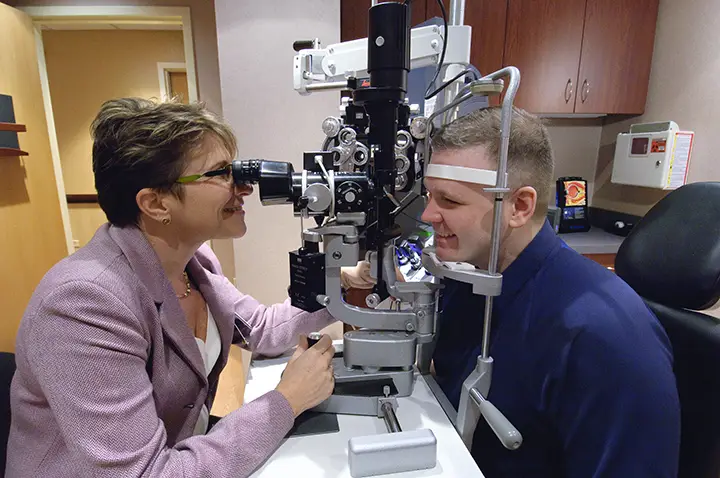If you’re tired of the daily hassle of glasses and contacts, imagine waking up to clear your vision every day. This isn’t just wishful thinking—it’s a real possibility with LASIK eye surgery. This blog is your guide to understanding how this popular procedure can change the way you see the world.
LASIK, or Laser-Assisted In Situ Keratomileusis, is a quick and straightforward surgery designed to correct your vision, potentially letting you ditch those glasses or contact lenses for good. Whether you’re nearsighted, farsighted, or have astigmatism, LASIK might be the solution you’ve been looking for.
So, if you have any questions about LASIK, let’s dive in and get answers about this life-changing procedure!
Contents
- 1 Questions About LASIK Surgery
- 1.1 What Eye Conditions Can Be Treated With LASIK?
- 1.2 Who Can Undergo LASIK Laser Surgery?
- 1.3 Types of LASIK Eye Surgeries & Their Cost
- 1.4 Benefits of LASIK Eye Surgery
- 1.5 Here’s How The LASIK Procedure is Performed
- 1.6 Is LASIK Safe? Are There Any Risks and Complications?
- 1.7 Which Is The Best Hospital For Lasik Eye Surgery
- 1.8 How Many Days of Rest is Required after LASIK Surgery?
- 1.9 How Long Does it Take To Fully Recover From LASIK?
- 1.10 Is It Okay To Have Blurred Vision After LASIK Eye Surgery?
- 2 Conclusion
Questions About LASIK Surgery
What Eye Conditions Can Be Treated With LASIK?
 LASIK surgery is a versatile procedure that can correct several common eye conditions. Primarily, it’s used to address refractive errors, which affect how your eyes focus light, causing blurred vision. Here are the main conditions that LASIK can help correct:
LASIK surgery is a versatile procedure that can correct several common eye conditions. Primarily, it’s used to address refractive errors, which affect how your eyes focus light, causing blurred vision. Here are the main conditions that LASIK can help correct:
- Myopia (Nearsightedness): This is when you can see objects near to you clearly, but objects farther away are blurry. LASIK reshapes the cornea to allow light to focus properly on the retina, which improves distant vision.
- Hyperopia (Farsightedness): If you have hyperopia, you may see distant objects well, but close ones are out of focus. Through LASIK, the cornea is adjusted to help focus light more effectively on the retina, enhancing near vision.
- Astigmatism: With astigmatism, the cornea is irregularly shaped, causing overall blurry vision for both near and far objects. LASIK corrects this by smoothing the cornea into a more regular shape, improving the focus of light on the retina.
These conditions are commonly treated with glasses or contact lenses, but LASIK offers a long-term solution that can reduce or even eliminate your dependence on corrective lenses.
Who Can Undergo LASIK Laser Surgery?
 LASIK laser surgery is a fantastic option for those looking to correct their vision, but certain conditions apply. The U.S. Food and Drug Administration (FDA) has approved LASIK for individuals who are at least 18 years old. Besides your age, there are several to determine if someone is a good candidate for the procedure:
LASIK laser surgery is a fantastic option for those looking to correct their vision, but certain conditions apply. The U.S. Food and Drug Administration (FDA) has approved LASIK for individuals who are at least 18 years old. Besides your age, there are several to determine if someone is a good candidate for the procedure:
- Stable Prescription: It’s crucial to have a stable prescription for at least one year before undergoing LASIK. Frequent changes in your vision could indicate ongoing development or other issues that might affect the long-term success of the surgery.
- Overall Eye Health: Candidates for LASIK need to have healthy eyes. Conditions like severe dry eye, corneal diseases, and eye infections can complicate the procedure or lead to unsatisfactory results.
- Corneal Thickness: An important factor in LASIK surgery is the thickness of your cornea. The procedure involves reshaping the cornea by removing a small amount of corneal tissue. If your cornea is too thin, you might not be a suitable candidate.
- General Health: Certain medical conditions, such as autoimmune diseases or diabetes, can affect the healing process after LASIK. Patients with these conditions need to be evaluated on an individual basis.
If you meet these criteria and are considering LASIK, the next step is a detailed consultation with an eye care professional. They will conduct a thorough examination to determine if LASIK is the right choice for you, considering both the benefits and the risks.
Types of LASIK Eye Surgeries & Their Cost
Here’s a table summarizing the types of LASIK eye surgeries, along with their costs and key benefits:




